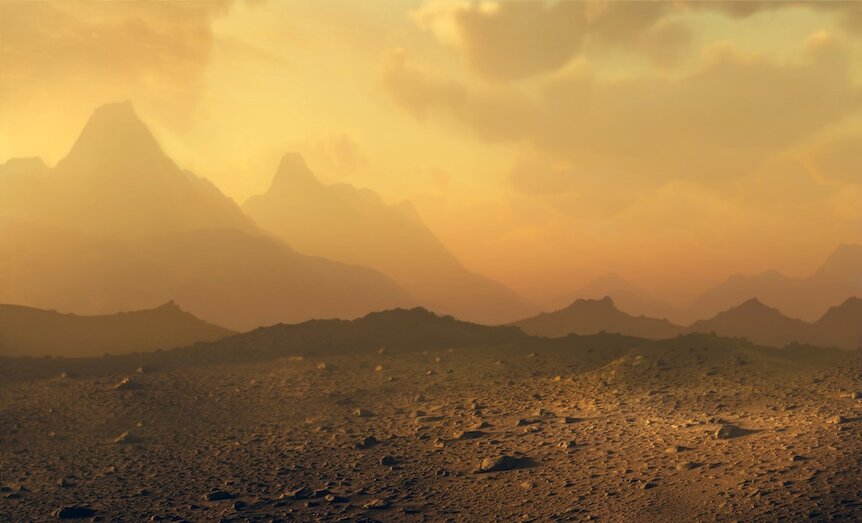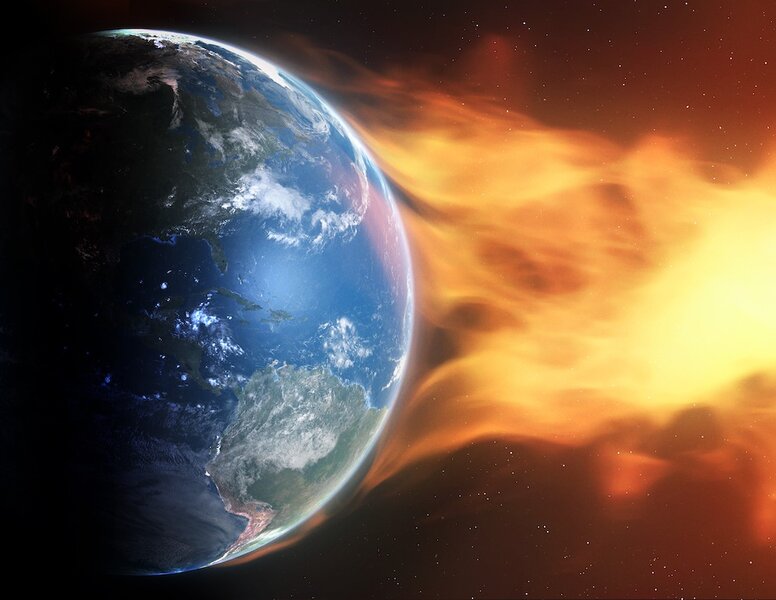Create a free profile to get unlimited access to exclusive videos, sweepstakes, and more!
What Would the World Look Like Under a Runaway Greenhouse Effect?
It's, uh, not good!
SYFY's interstellar science fiction adventure The Ark (streaming now on Peacock) imagines what might happen a century from now if we don’t get a handle on climate change. By the time the show starts, the effects of a global temperature rise have reached a fever pitch and ecosystems are in rapid collapse. Humanity abandons the Earth in an interstellar life raft departing for the nearby exoplanet Proxima centauri b.
If climate change goes unchecked, things are going to get pretty rough around here, but It’s unlikely that the Earth will really experience a catastrophic environmental collapse in the next century. That said, a new study published in the journal Astronomy & Astrophysics shows that the distance between earthly paradise and unlivable hellscape isn’t all that large.
How a Runaway Greenhouse Effect Could Create Hell on Earth
In the new study, researchers have simulated what a runaway greenhouse effect would look like on Earth, running through all of the phases from transition point to the long-term consequences, for the very first time. They found that the average global temperature would only need to be a few tens of degrees warmer to trigger a cascade effect which ends with Earth looking a lot more like Venus.
RELATED: Scientists Want to Tether a Global Sunshade to a Meteor; Here’s Why
In case you were wondering, Venus is the hottest planet in our solar system, even hotter than Mercury which is significantly closer to the Sun. Temperatures on Venus get up to a staggering 464 Celsius (867 Fahrenheit) and a runaway greenhouse effect could transform Earth into something even less hospitable than Venus in the blink of a cosmic eye.
The simulation relied on a relatively small increase in solar radiation, something which will actually happen naturally as the Sun ages. Roughly a billion years from now, the Earth will be unlivable no matter what humans do, and this simulation models how that might happen. It’s unclear at this point if temperature rise driven by human activity will have the same results at the same thresholds, but anything we can do to forestall a runaway greenhouse effect is good and correct.
Of course, not all greenhouse effect is bad. Too little and we’d bleed heat too quickly into space, transforming our planet into a sphere of lifeless ice. Too much and the oceans start to evaporate, water vapor fills the air, the heat keeps ratcheting without a chance to escape, and we all slow broil. It’s about striking a balance. “There is a critical threshold for this amount of water vapor, beyond which the planet cannot cool down anymore. From there, everything gets carried away until the oceans end up getting fully evaporated and the temperature reaches several hundred degrees,” said Guillaume Chaverot, the study’s main author, in a statement.
RELATED: Zombie Gas Could Creep Through Arctic Ice, Because Climate Change Is Coming for Us
Water vapor seems to be the key to the whole thing. It’s a potent greenhouse gas which grabs hold of heat from the Sun and doesn’t let go. As the surface of the ocean evaporates, all of that water will transform into water vapor and coat the planet in a thick blanket. And blanket is the right word, water vapor is like a roach motel for heat; once it gets in, it can’t get out. So, the temperature rises and more water evaporates and the vapor blanket gets a little thicker. You can see how this situation could get out of control pretty quickly. What’s surprising is just how quickly it could happen.
“Assuming this runaway process would be started on Earth, an evaporation of only 10 meters of the oceans’ surface would lead to a 1 bar increase of the atmospheric pressure at ground level. In just a few hundred years, we would reach a ground temperature of over 500°C. Later, we would even reach 273 bars of surface pressure and over 1,500°C, when all of the oceans would end up totally evaporated,” Chaverot said.
Glimpsing one potential horrible future gives climate scientists more tools for understanding how our ecosystem works and where to put up guard rails, but it’s also beneficial to astronomers. Researchers noticed telltale cloud structures which showed up just as the atmosphere was transitioning from livable to running full speed toward destruction. Astronomers might be able to use those cloud structures like a fingerprint to figure out if distant exoplanets might be habitable or not.
In short, these kinds of models could help us prevent the inciting incident of The Ark, and if that doesn’t work then they could help us find some other habitable world to go to.
Catch the complete first season of The Ark streaming now on Peacock.




































